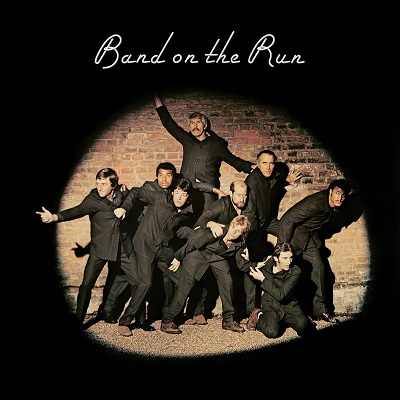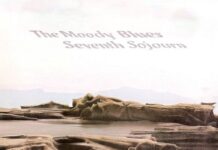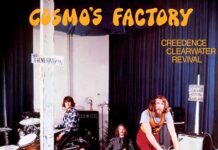Band On The Run remains a standout among recordings by Paul McCartney that followed the Beatles’ 1970 break-up. With the shadow of the beloved Fab Four hanging precariously overhead, it must have dawned on Paul McCartney that if he wanted to stay in the limelight, he’d have to do something monumental. While John Lennon and George Harrison utilized their early solo efforts to bare their souls, McCartney doodled with oodles of half-hearted ideas, perhaps attempting to wedge open his own spring of emotional wounds. Maybe the problem was that Macca and Ringo Starr were simply a couple of happy-go-lucky ex-Beatles without chips on their shoulders.
By 1973, the tensions gave way, and both McCartney and Starr released their brightest and biggest albums. Ringo, featuring three Top 10 hits and a lot of help from his friends including three special Liverpudlian lads, put the drummer’s floundering status in perspective. McCartney’s chart-topping Band On The Run more or less re-established the singer-songwriter’s reputation as an A-list recording artist. Even Lennon had to admit it was a “great” album.
For all the accolades Band On The Run would receive, it’s amazing the record was made at all. From the get-go, Wings were faced with one ordeal after another. Before recording a single note, lead guitarist Henry McCullough and drummer Denny Seiwell quit the short-lived band, leaving the McCartneys, along with guitarist Denny Laine, to fend for themselves. To make matters worse, McCartney booked an EMI recording studio in Lagos, Nigeria, with hopes that the exotic atmosphere would add a distinct flavor to the recording. To his horror, the experience was rife with problems.
For one, the studio was antiquated and ill-equipped. Against advice from the locals, the McCartneys went out for the evening and were mugged and robbed at knife-point. Geoff Emerick, who engineered every Beatle record since Revolver, was overcome by the region’s insect population. At one point, McCartney became deathly ill. To cap it off, the whole project was in danger of being sabotaged when controversial Afrobeat star Fela Ransome-Kuti accused the visiting musicians of trying to exploit African music for their own gain. After a month, Wings headed back to England to finish off the album.
Once Tony Visconti dubbed in the orchestration and the star-studded album cover was photographed, Band On The Run was released to a receptive record-buying public. “Helen Wheels,” McCartney’s ode to his Land Rover, was the first single that, along with the title track, took the album to Number One. A few months later, “Jet,” the second song McCartney had written about his dog (the first was “Martha My Dear” from the
Beatles’ White Album), was released in America and the album returned to the top of the heap. McCartney handled all the drums (even though Ginger Baker was able and willing to help), as well as bass and guitar with Laine, and the record’s homegrown feel blossoms with universal appeal.
Reminiscent of the primal style of John Lennon, “Let Me Roll It” is one of Wing’s all-time underrated classics. “No Words,” co-written with Laine, is probably the most Beatlesque track on the disc. Then there’s the willowy “Picasso’s Last Words (Drink To Me),” inspired by actor Dustin Hoffman’s challenge to McCartney about writing a song on the spot — which he apparently did with relative ease. The Grammy-winning Band On The Run is the most successful album of McCartney’s post-Beatle recording career. And while Sir Paul has ambled forth with grand style into the 21st Century, the notion of him ever making another album that Rolling Stone magazine could proudly ordain Record of the Year seems like a distant pipe dream.
~ Shawn Perry




















